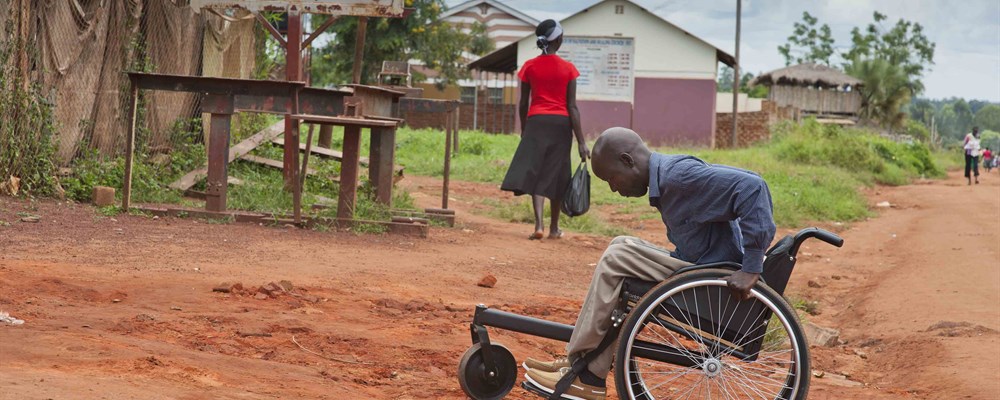Some of the world’s biggest names have pooled their resources to help millions of people around the world live a better life with the next generation wheelchair. Inevitably, 3D printing is an integral part of the process.
Motivation is a charity that started in 1991, after Simon Grue and David Constantine MBE, a graduate of the RCA, designed a wheelchair for developing nations. Now an Innovation Fund and support from the RCA and Google could help take the charity’s work to the next level.
Google weighs in with 3D printing money
The charity aims to raise $1.5 (£1 million) over the next three years, but Google.org’s support could have an even greater impact as it has already provided the necessary funds for the charity to investigate 3D printing. This means it can analyse the materials it’s using and change the whole production process.
“Faced with the twin pressures of rapily accelerating advances in technology, and an ever-growing need for our products, we knew Motivation needed a step change to meet the challenges of the next 25 years,” said Constantine. “We’ve already shown the world that with the right wheelchair, training and support, even the poorest and most vulnerable can lead full, healthy and productive lives.
“By building a fund dedicated to exploring new innovations and capitalising on advancements made in materials, technologies and manufacturing techniques, we now hope to take wheelchair provision to the next level.”
Could production be outsourced?
In theory, Motivation could even focus on designs and outsource the printing to local suppliers, which will cut shipping from the costs. It will also mean that chairs can be supplied quickly when there is a sudden demand.
Motivation is focussed on those that simply don’t have access to wheelchairs, which happens almost every time there is a natural disaster in an impoverished nation. There was a spike in demand after the earthquakes in Haiti, for instance, and there was simply no way to keep up with it. That meant some of the poorest people in society were left helpless.
In these instances, a simple, cost-effective wheelchair that will give more people their freedom and a better quality of life.
Big name designers on board
A series of big names turned out for the launch, including philanthropist Lady Helen Hamlyn, pop culture commentator Professor Sir Christopher Frayling, writer and broadcaster Deyan Sudjic OBE and designer Sir John Sorrell CBE. They will all be involved at some level
The project will start by analysing Motivation’s iconic three-wheel design, which has already proven itself in some of the world’s toughest environments and has been refined over the last 25 years.
The initial plan is to take the cost-effective three-wheeler and turn it into a folding wheelchair, which will make it more practical. It is already designed for rough terrain, as the developing world doesn’t have marble smooth pavements at every turn.
It will take nothing for granted, though, and will consider every aspect of the design to make it lighter, stronger, cheaper or better in some other way. Motivation currently supplies a selection of chairs, for rough terrain right through to sports, so it can take the best aspects from each chair on this ground-up redesign.
3D printing holds the key to a better wheelchair
3D printing, though, could change the whole process as the team can now look at the materials and the construction to completely redesign the chair.
With this level of support and 3D printing, the team is sure to make improvements in the design and construction of the wheelchair. Technology is about to touch the lives of millions of the poorest people around the world, which has to be a good thing.



